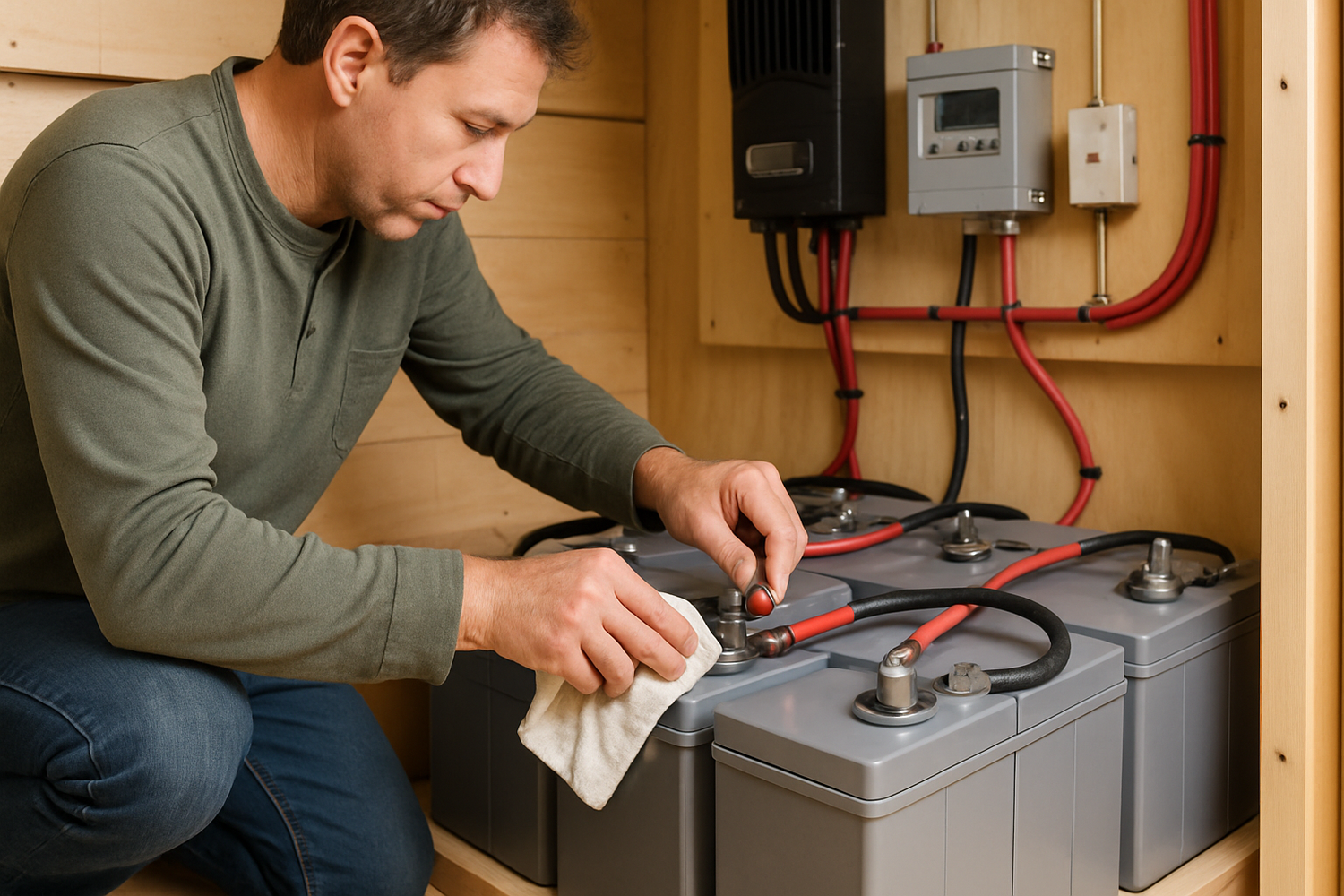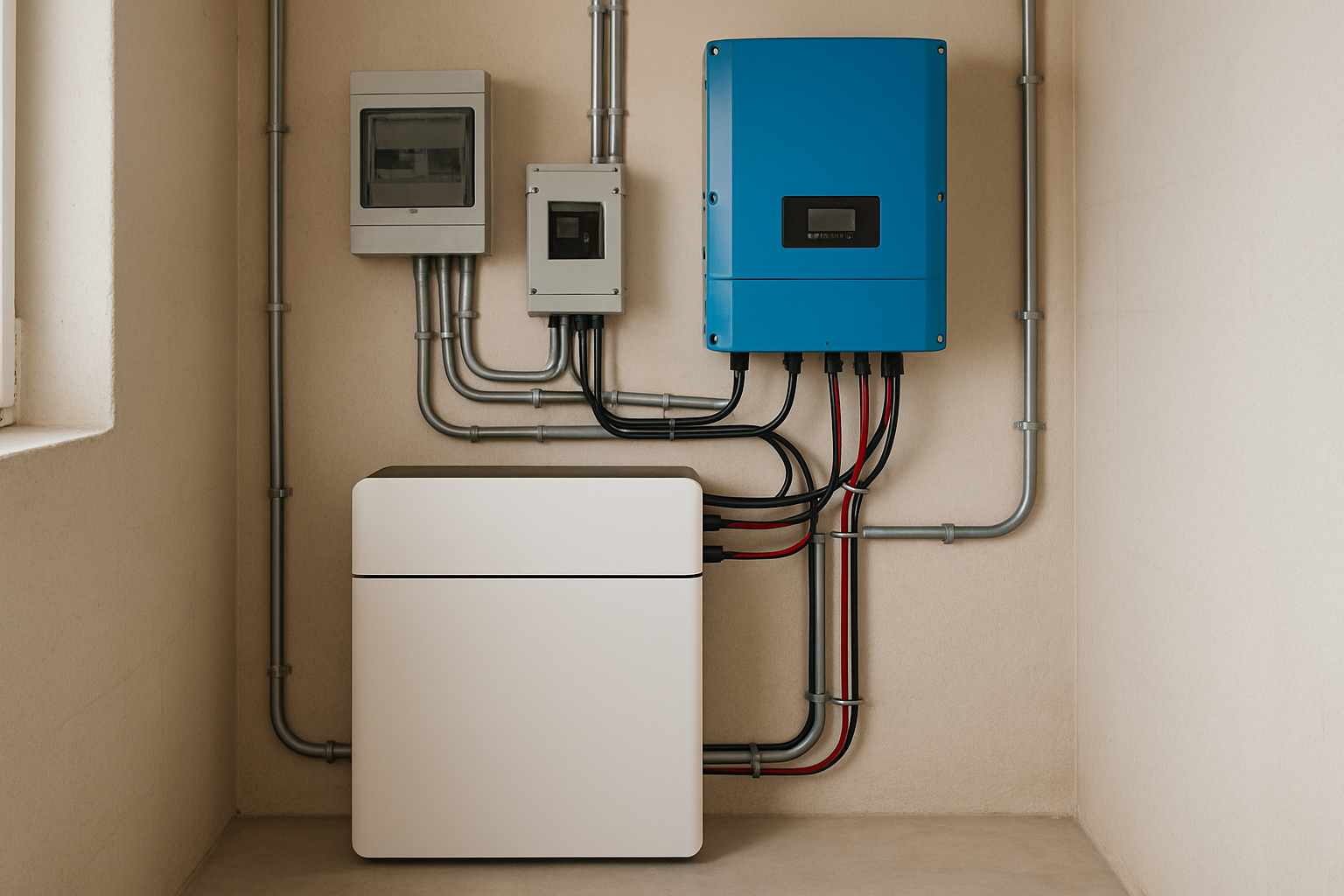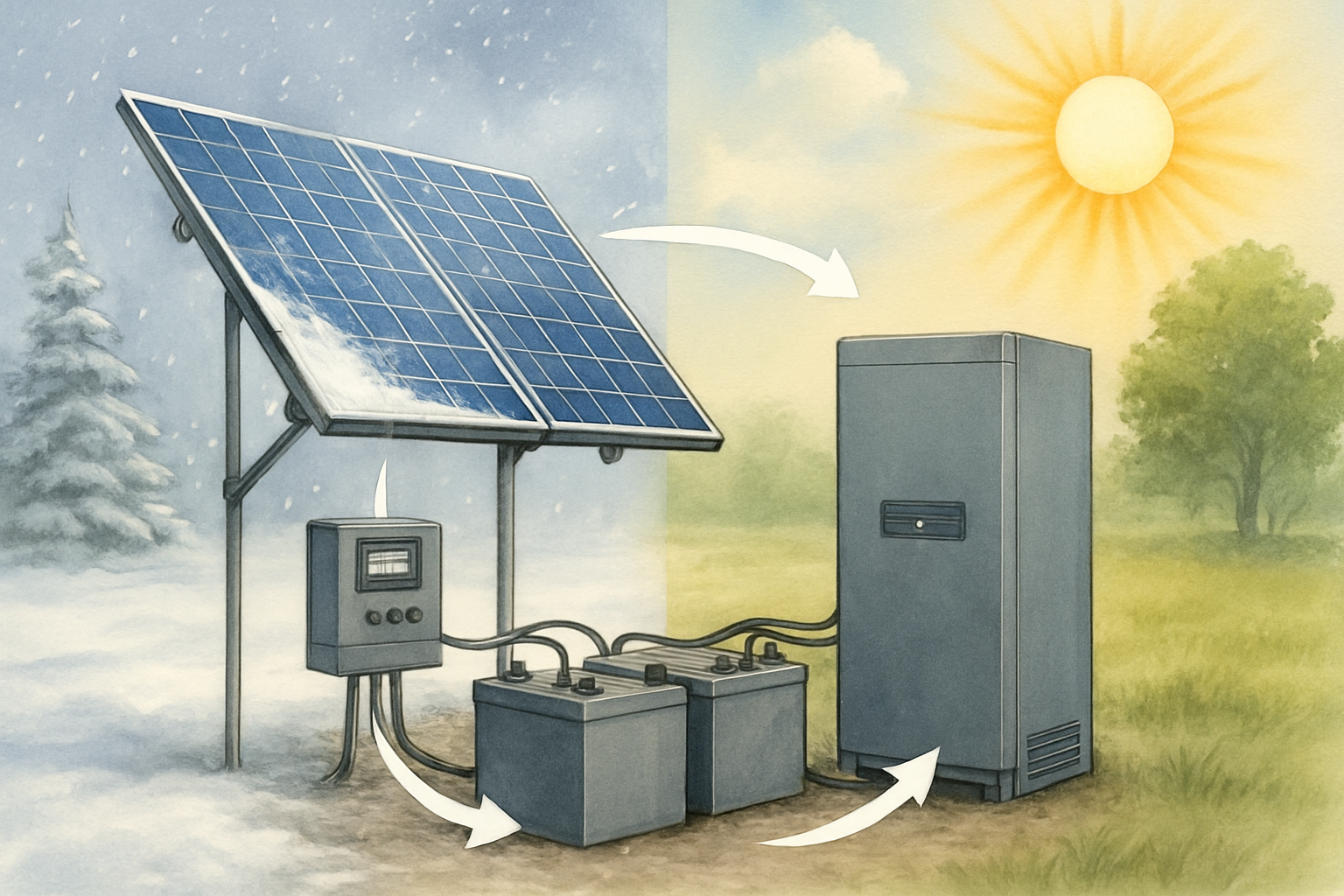Achieving true energy independence with an off-grid solar system relies heavily on the health of its battery bank. Batteries are the heart of your system, storing the energy captured by solar panels for use when the sun is not shining. Proper off-grid battery maintenance is not just about extending their lifespan; it ensures consistent, reliable power and maximizes your investment.
This blueprint provides a systematic approach to battery care in off-grid systems, offering practical insights and actionable steps. You will gain a clear understanding of how to maintain off-grid batteries for peak efficiency, ensuring your energy needs are met consistently.
Understanding Off-Grid Battery Systems
Before diving into maintenance, it helps to grasp the fundamentals of off-grid battery systems. Different battery chemistries have unique characteristics and maintenance requirements.
Battery Types and Their Characteristics
While various battery types exist, lithium iron phosphate (LiFePO4) batteries are increasingly popular for off-grid applications due to their high performance, safety, and reliability. They offer a longer cycle life and deeper discharge capabilities compared to traditional lead-acid batteries. However, other types like flooded lead-acid (FLA), sealed lead-acid (SLA), and gel batteries still see use, each with specific care needs.
- LiFePO4 Batteries: Known for high energy density, long cycle life (often thousands of cycles), and minimal maintenance. They perform well across a wide temperature range and are generally safer.
- Flooded Lead-Acid (FLA) Batteries: Require regular watering to maintain electrolyte levels and proper ventilation due to gas emissions. They are cost-effective but have a shorter cycle life and require more hands-on maintenance.
- Sealed Lead-Acid (SLA) / Gel Batteries: Maintenance-free in terms of watering, but sensitive to overcharging and temperature extremes. They have a moderate cycle life.
Key Performance Indicators (KPIs)
Monitoring key performance indicators helps you assess battery health and anticipate issues. The most important KPIs include:
- State of Charge (SOC): The current charge level of your battery, usually expressed as a percentage. Maintaining an ideal SOC window, often between 20% and 90% for LiFePO4, significantly extends battery lifespan.
- Voltage: Indicates the battery's electrical potential. Monitoring individual cell voltages in a bank helps detect imbalances.
- Current (Charge/Discharge Rates): The rate at which energy enters or leaves the battery. Optimal C-rates prevent undue stress.
- Temperature: Extreme temperatures can degrade battery performance and life. Batteries operate best within specified temperature ranges.
- Internal Resistance: An indicator of battery health; an increasing internal resistance often signals degradation.
Routine Maintenance Practices
Consistent, routine maintenance is crucial for prolonging battery life and ensuring system reliability. This involves regular physical checks, diligent monitoring, and optimizing operational parameters.
Regular Inspections and Cleaning

Visual inspections are your first line of defense. Look for any signs of corrosion on terminals, loose connections, or physical damage to battery casings. Clean terminals with a wire brush and a baking soda solution (for lead-acid) to remove corrosion, ensuring good electrical contact. For FLA batteries, check electrolyte levels monthly and top up with distilled water as needed. Ensure ventilation is clear, especially for lead-acid batteries that release hydrogen gas during charging.
Monitoring and Data Analysis
Modern off-grid systems often include Battery Management Systems (BMS) and system monitors that provide real-time data. Regularly reviewing this data helps you identify trends and potential problems early. Pay attention to voltage fluctuations, unusual temperature readings, or inconsistent charge/discharge cycles. Many systems allow you to set alerts for abnormal conditions. Data analysis can reveal patterns, such as increased discharge rates during certain periods, allowing you to adjust usage or generation strategies.
Optimizing Charge and Discharge Cycles
How you charge and discharge your batteries directly impacts their longevity. Avoid consistently deep discharges, especially for lead-acid batteries. For LiFePO4, while they tolerate deeper discharges, operating within a moderate SOC range (e.g., 20-90%) can further extend their life. Ensure your charge controller settings are correct for your battery type, providing appropriate voltage and current. Overcharging or undercharging can both be detrimental.
According to the Electricity Storage Valuation Framework, hybrid power plants integrating storage systems enhance energy reliability and system performance by aligning electricity supply with demand more effectively. This highlights the importance of optimized charge/discharge cycles for overall system health and efficiency.
Advanced Maintenance and Troubleshooting
Beyond routine checks, some situations require more advanced attention to maintain off-grid power system battery health.
Addressing Common Issues
Common issues include cell imbalance, sulfation (in lead-acid batteries), and capacity degradation. A BMS actively balances cells in LiFePO4 banks, but for lead-acid, periodic equalization charges can help. If you notice a significant drop in capacity over time, it may indicate battery aging or a more serious issue. Consult your battery manufacturer's guidelines for specific troubleshooting steps. Early detection of issues through monitoring can prevent minor problems from becoming major system failures.
Seasonal Adjustments
Environmental conditions, particularly temperature, affect battery performance. Batteries are less efficient in cold weather and can degrade faster in extreme heat. Adjusting charge parameters based on seasonal temperatures can optimize performance. For instance, some charge controllers offer temperature compensation. In colder climates, consider insulating your battery bank to maintain a more stable operating temperature. Conversely, ensure adequate ventilation in hot climates to dissipate heat. The Oglala Lakota College project demonstrated the practical application of off-grid systems in varying conditions, underscoring the need for adaptable maintenance.
Ensuring Longevity and Reliability
The ultimate goal of off-grid battery maintenance is to ensure long-term reliability and energy independence.
System Sizing and Integration
A properly sized off-grid system, where battery capacity matches your energy consumption and solar generation, reduces stress on your batteries. Oversizing your battery bank slightly can provide a buffer, preventing frequent deep discharges. Integrating high-quality components, including a robust BMS and an efficient solar inverter, ensures seamless operation and protection for your batteries. The BATRIES team's findings emphasize the importance of proper system integration for energy storage, even in grid-tied contexts, which translates to off-grid reliability.
Future-Proofing Your Off-Grid Power
As technology advances, consider upgrades that enhance battery life and system efficiency. This might include advanced monitoring systems or integrating smart home energy management solutions. The renewable energy sector is constantly evolving, with innovations like grid-forming inverter technologies becoming more prevalent, even at the mini-grid level. IRENA highlights that such technologies, often linked to battery systems, are proven and reliable in remote, demanding conditions, suggesting future enhancements for off-grid setups.
Sustaining Your Energy Independence
Maintaining your off-grid battery system is a continuous process, not a one-time task. By following this maintenance blueprint, you safeguard your investment, ensure a consistent power supply, and contribute to a sustainable energy future. Regular care, informed monitoring, and proactive adjustments will help you achieve lasting energy independence.
Frequently Asked Questions
What is the ideal temperature range for off-grid batteries?
Most batteries, especially LiFePO4, perform best in moderate temperatures, typically between 20°C and 30°C (68°F and 86°F). Extreme cold reduces capacity and efficiency, while extreme heat accelerates degradation. Always refer to your battery manufacturer's specifications for precise temperature guidelines.
How often should I check my off-grid batteries?
Visual inspections and basic monitoring should occur weekly or monthly. For lead-acid batteries, check electrolyte levels monthly. Comprehensive system data review, including SOC, voltage, and temperature trends, is advisable quarterly. A thorough annual inspection by a qualified technician can also be beneficial.
Can I mix different types of batteries in my off-grid system?
Generally, you should not mix different battery chemistries (e.g., LiFePO4 with lead-acid) or even batteries of different ages or capacities within the same bank. This can lead to imbalances, reduce overall system efficiency, and shorten the lifespan of all batteries involved. Always use identical batteries for optimal performance and safety.





Leave a comment
All comments are moderated before being published.
This site is protected by hCaptcha and the hCaptcha Privacy Policy and Terms of Service apply.